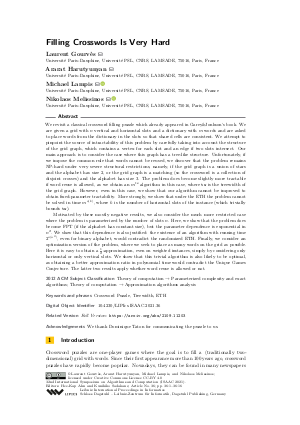LIPIcs.ISAAC.2021.36.pdf
- Filesize: 0.75 MB
- 16 pages


 Creative Commons Attribution 4.0 International license
Creative Commons Attribution 4.0 International license
















Feedback for Dagstuhl Publishing